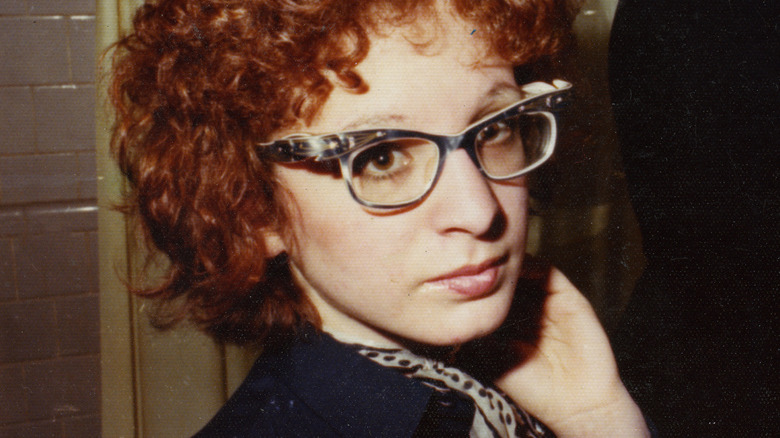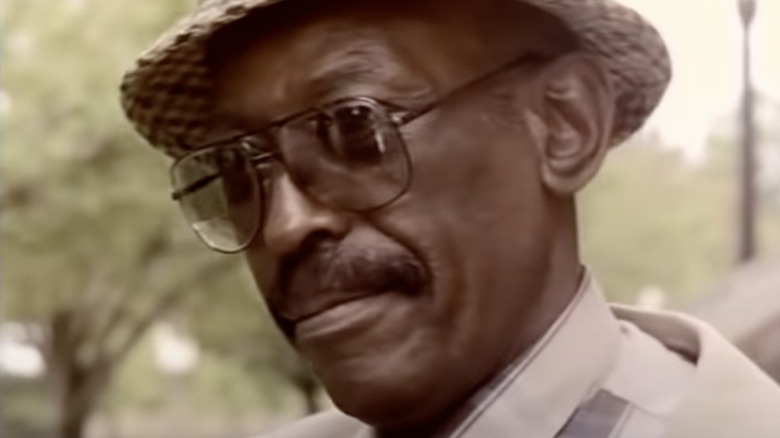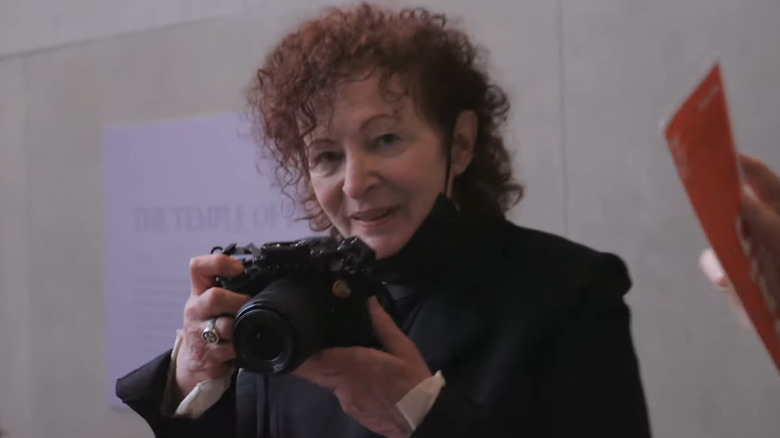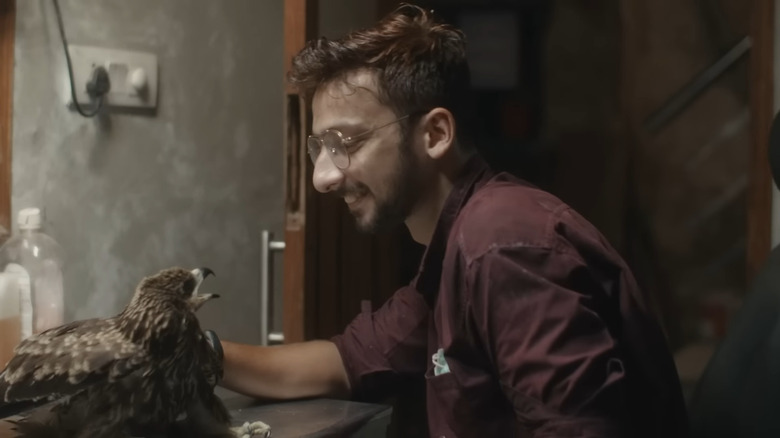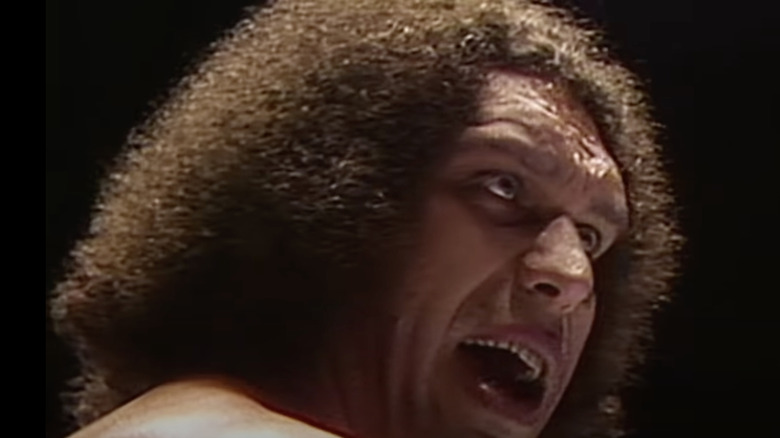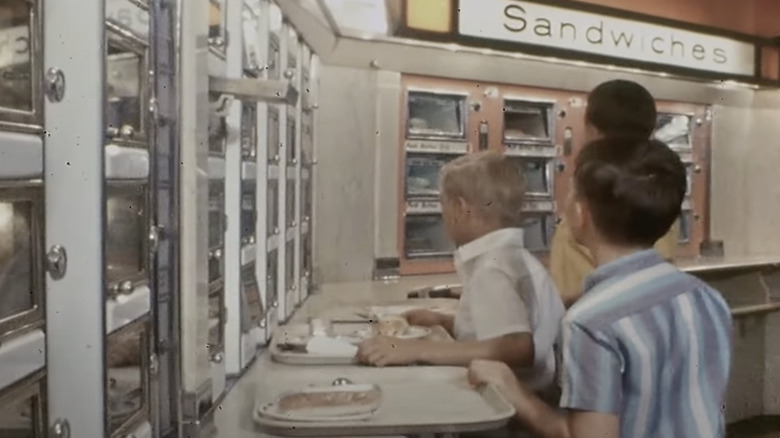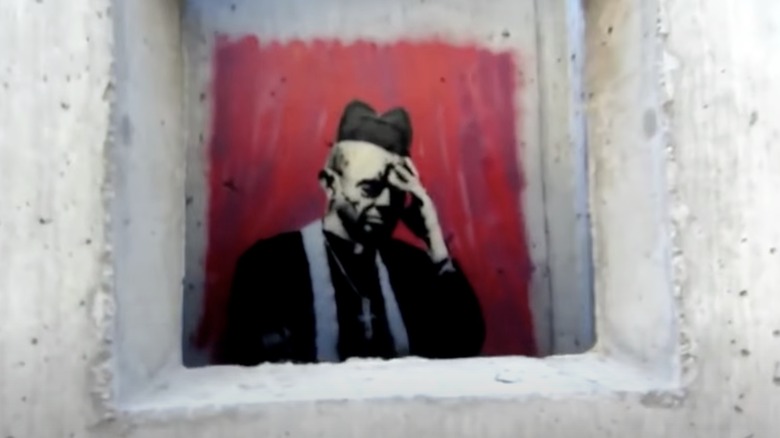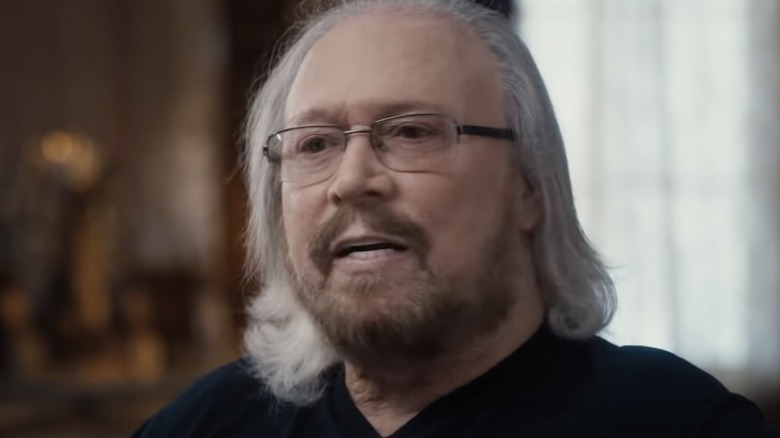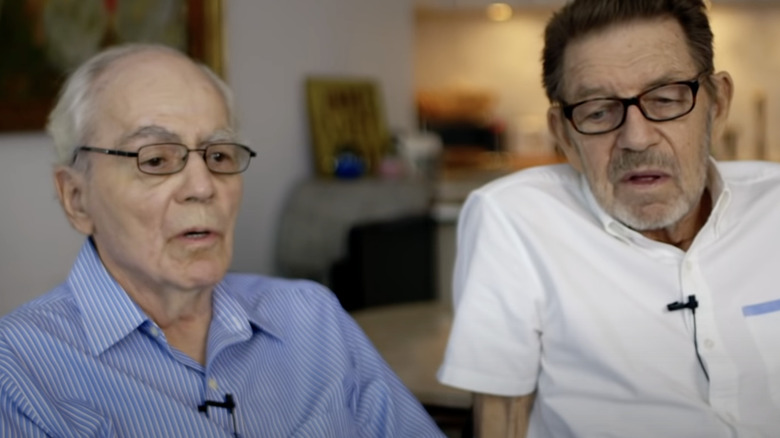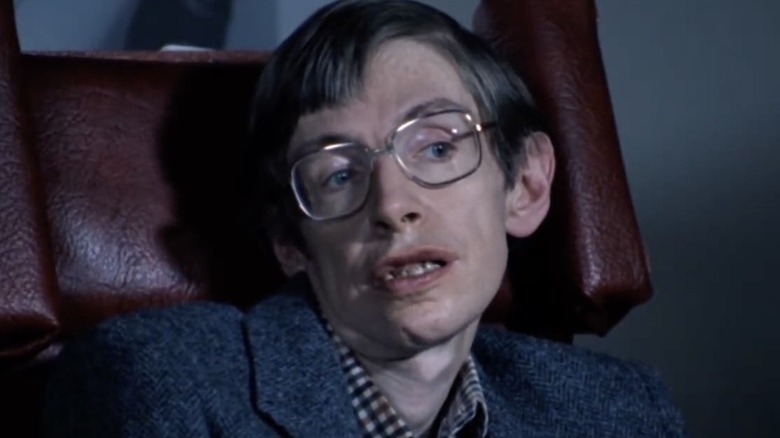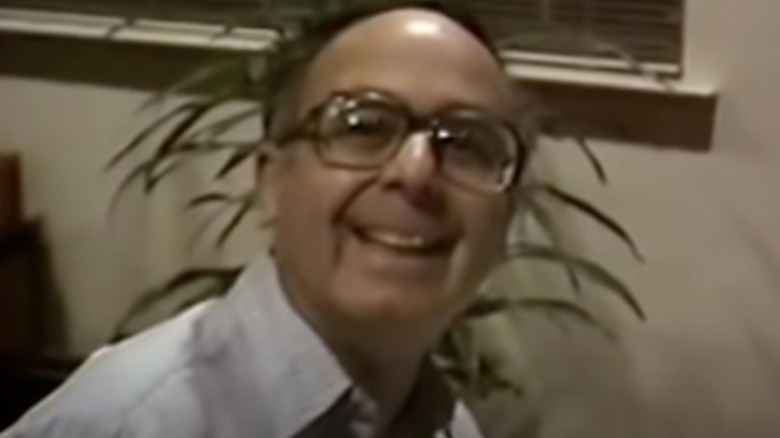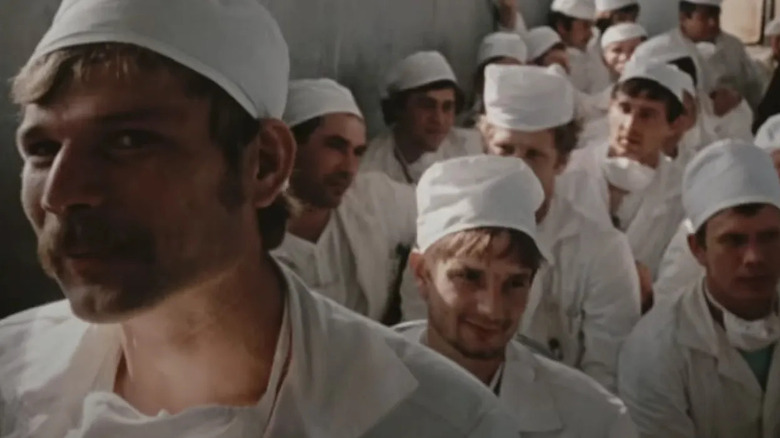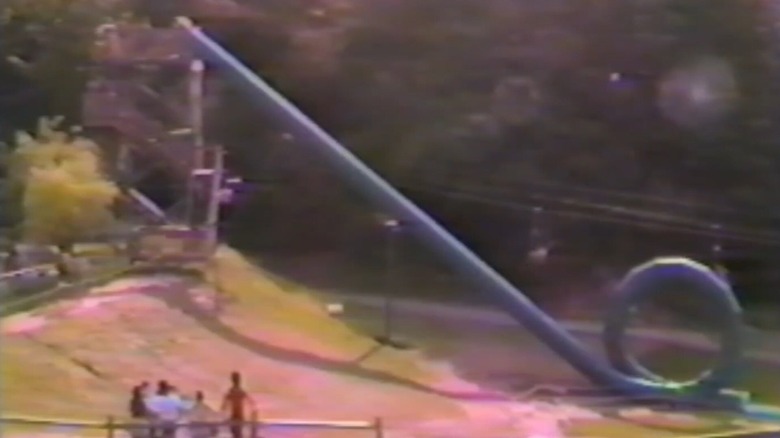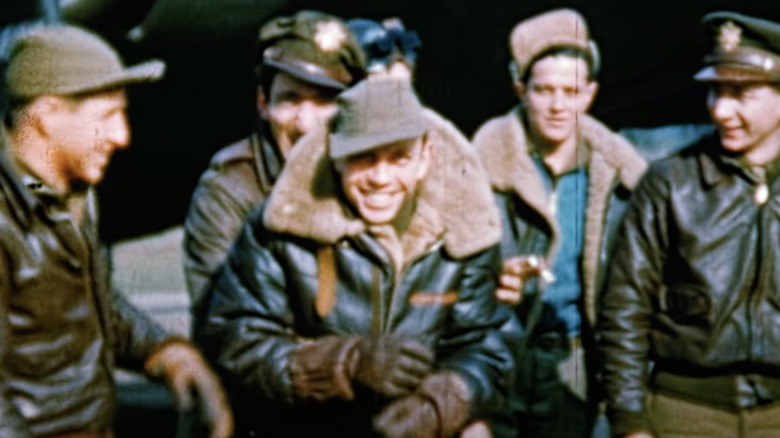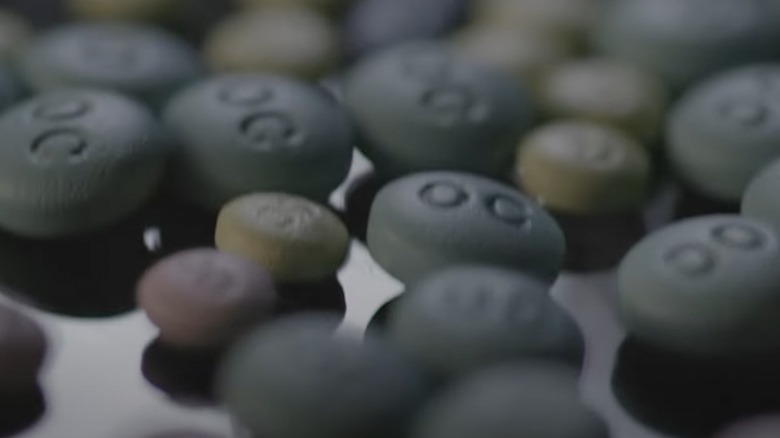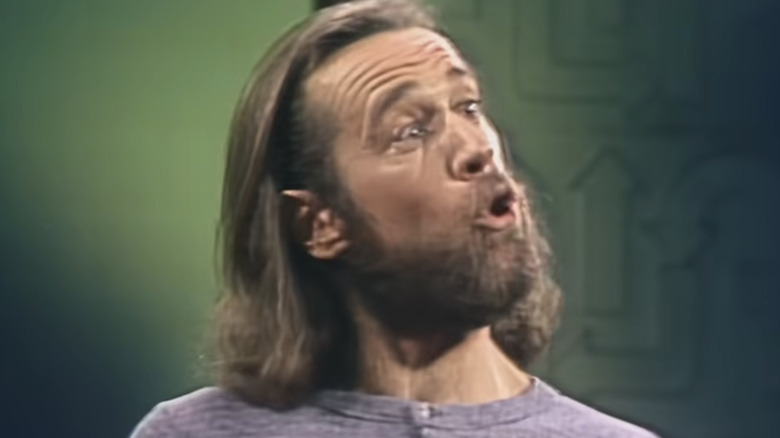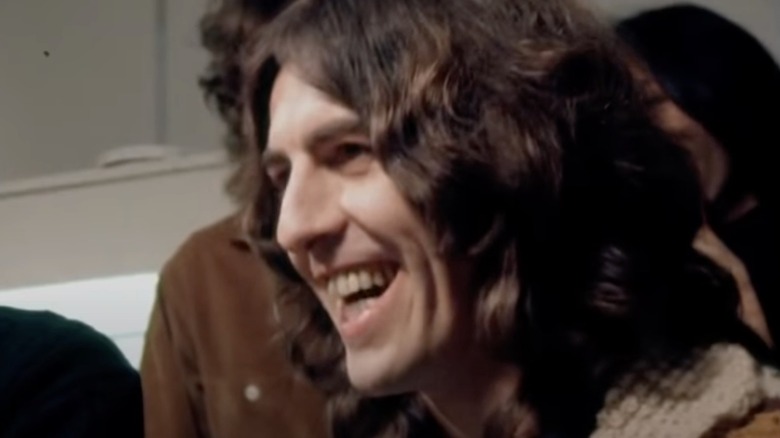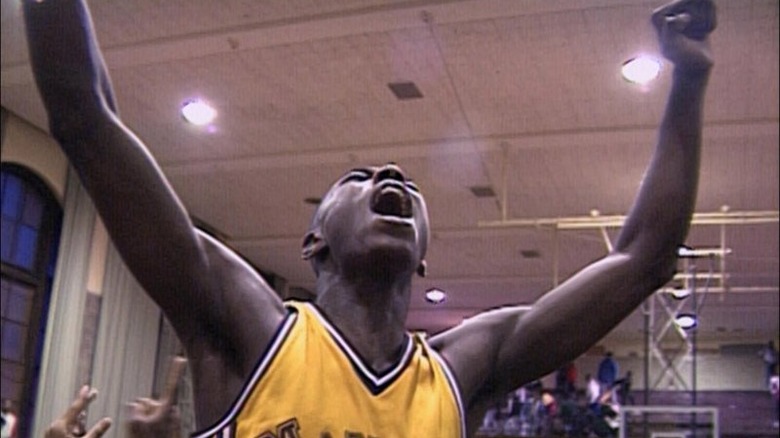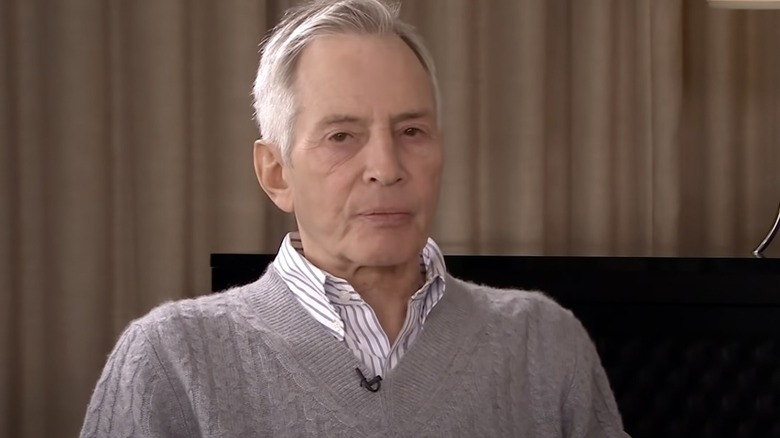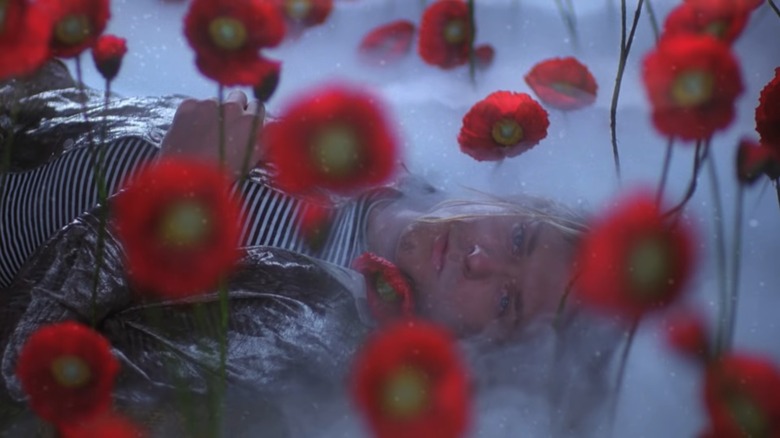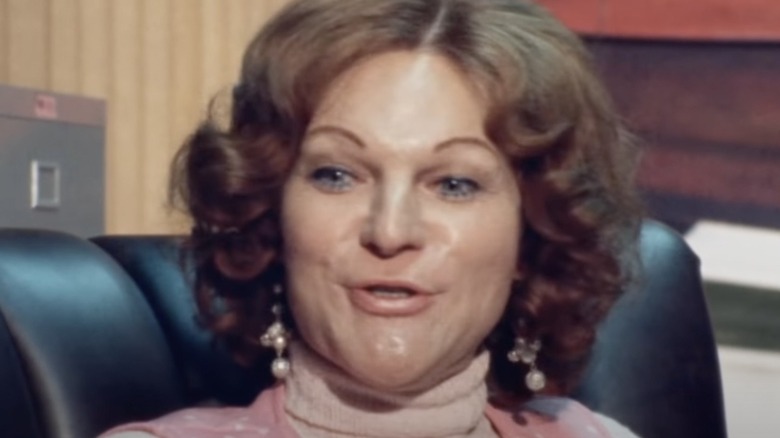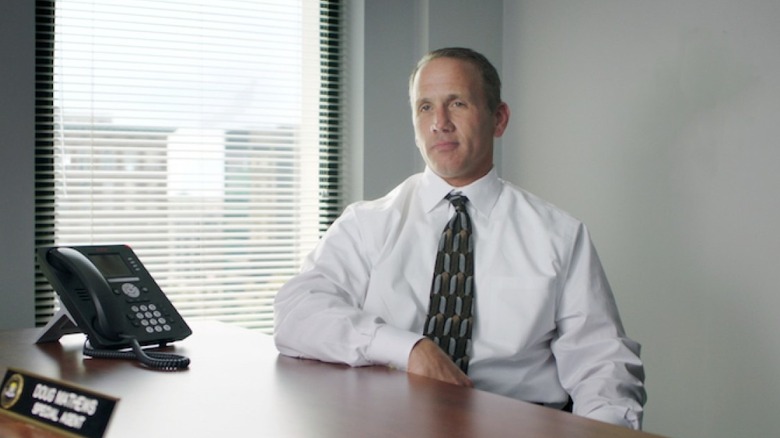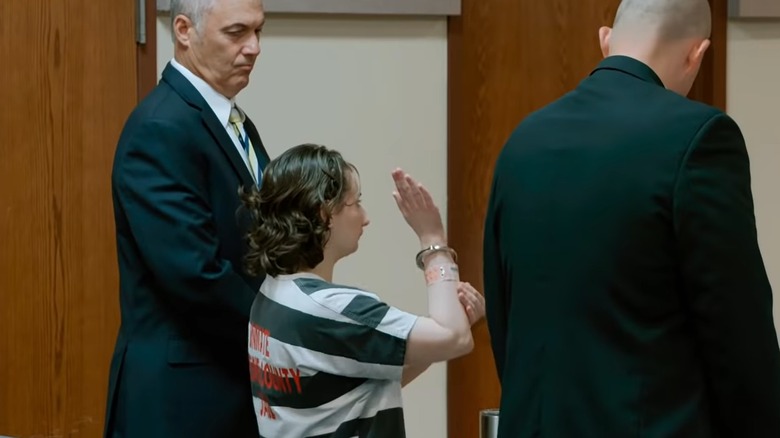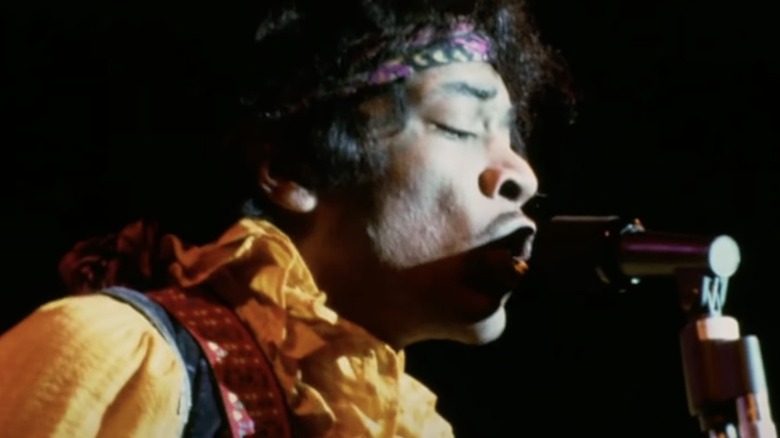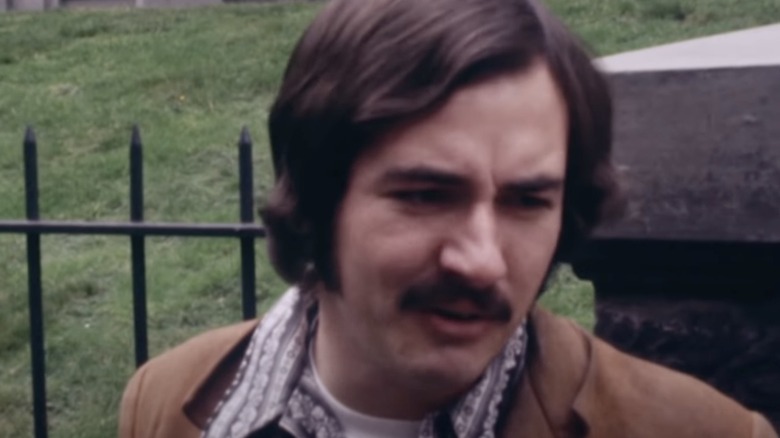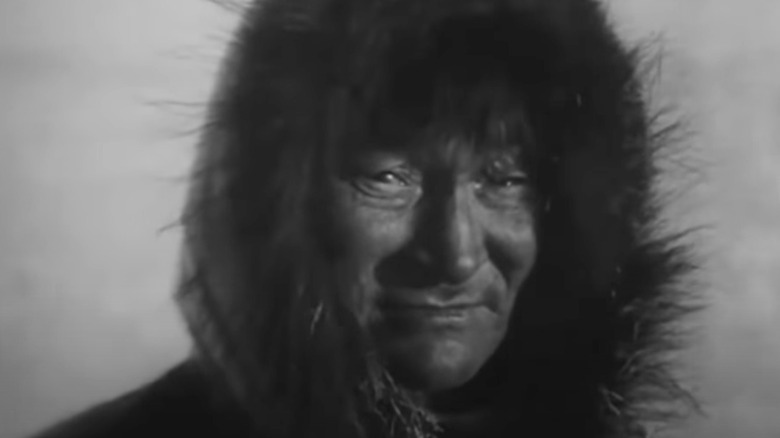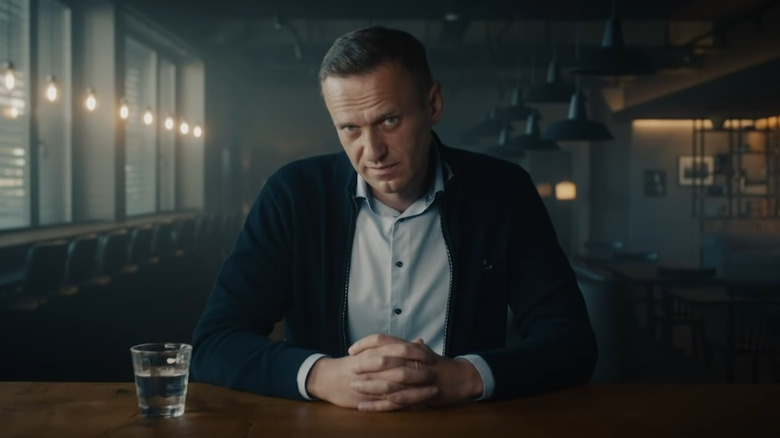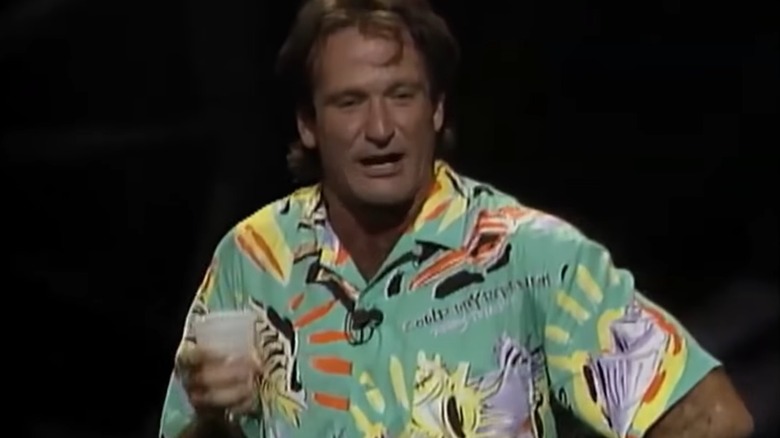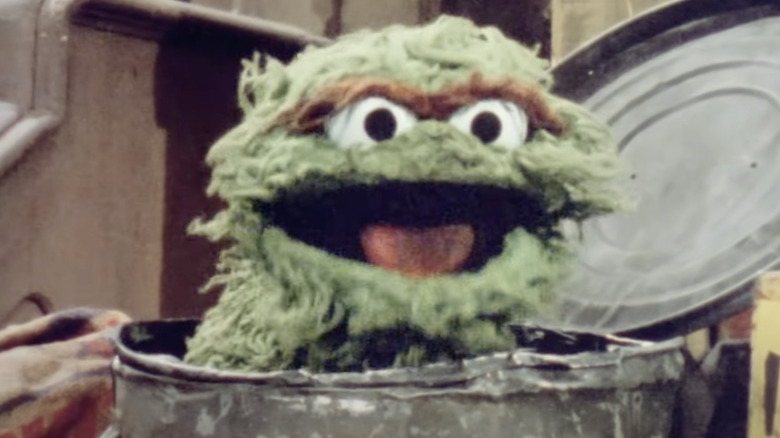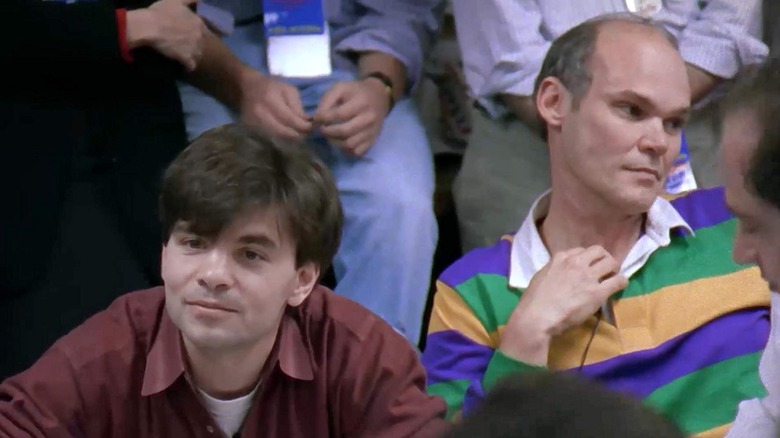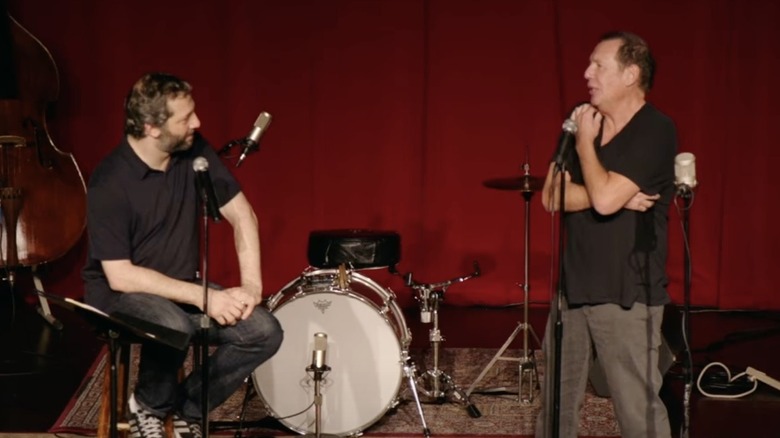30 Best Documentaries On HBO Max
Documentaries offer a safe and engrossing way for viewers to be a proverbial fly on the wall, to gain access and observe situations they might never find themselves privy to. Such films present life as it happens, and they entertain as they educate. They can also sadden, delight, surprise, and shock us. With cameras always rolling, impossible-to-fake and extra-real moments are captured forever. Because of these unique properties, one could argue that documentaries will always be more dramatic and breathtaking than even the best fictional films.
And when it comes to the very best docs, the streaming service HBO Max has a huge library of movies at the ready. We're talking about some of the most important, riveting, and unforgettable documentary films and made-for-TV series ever made.
Updated on April 3, 2023: From Oscar-winning films to all-time classics and surprise indie darlings, these are the best documentaries on HBO Max.
4 Little Girls
Spike Lee, one of the greatest and most insightful filmmakers of our time, most frequently writes and directs movies that take a hard and critical look at race in America, both historically and in contemporary times. In 1997, he stepped away from narrative film to helm "4 Little Girls," a documentary about an ugly and tragic event in U.S. history. In 1963, Ku Klux Klan operatives set off explosive devices at a predominantly Black church in Birmingham, Alabama. Four children, all girls between the ages of 11 of 14, died in the attack. The documentary features interviews with civil rights activists of the era, along with authorities and relatives of the people involved in the bombing, creating a documentary that serves as memorial, reflection, and a call to action.
- Director: Spike Lee
- Year: 1997
- Runtime: 102 minutes
- Rating: TV-14
- Rotten Tomatoes Score: 100%
All the Beauty and the Bloodshed
Nan Goldin is one America's most progressive and transgressive artists, utilizing the medium of photography to intimately and sensitively depict others and give voice to the overlooked. Her art gave way to activism, and this documentary tells the story of Goldin's work speaking truth to power and calling out egregious injustice. In particular, "All the Beauty and the Bloodshed" examines Goldin's role in taking down the Sackler family, whose prescription drug empire fueled many unnecessary overdose deaths and who funneled a lot of their profits into the worlds of art and museums, forcing those curators to examine their funding sources.
- Director: Laura Poitras
- Year: 2022
- Runtime: 117 minutes
- Rating: NR
- Rotten Tomatoes Score: 95%
All That Breathes
Visceral, engrossing, and attention-demanding, "All That Breathes" is a nature documentary but one of a new breed — it's set in an urban area and features domesticated animals and wild birds alike and how they deal with the encroachment of both human civilization and human assistance. New Delhi, India, is one of the most densely populated and deeply polluted places on the planet, and it's where brothers Nadeem Shehzad and Muhammad Saud operate a clinic out of their basement to attend to sick raptors, in particular black kites, who routinely and alarmingly fall out of the sky, ill from pollution. "All That Breathes" is a gentle documentary with an urgent message, and it was nominated for best documentary at the 2023 Academy Awards.
- Director: Shaunak Sen
- Year: 2022
- Runtime: 91 minutes
- Rating: NR
- Rotten Tomatoes Score: 100%
André the Giant
André René Roussimoff was a mountain of a man, standing more than seven feet tall. Wrestling fans know him as the intimidating André the Giant, the singlet-clad titan of many landmark WWF wrestling matches of the 1980s. Cinephiles know him as sweet kidnapper Fezzik of "The Princess Bride." Oozing charisma and might, he captivated the world. This documentary, co-produced by sports writer and commentator Bill Simmons, explores the real André, who lived beyond his roles on screen and in the ring. His story is dominated by the medical condition that made him famous — yet it is also one of international triumph.
- Director: Jason Hehir
- Year: 2018
- Runtime: 85 minutes
- Rating: TV-14
- Rotten Tomatoes Score: 96%
The Automat
Long before fast food in America meant omnipresent drive-throughs, the best (and sometimes only) way to grab a quick, cheap meal in a major city was to pop into a Horn and Hardart automat. A vast cafeteria-meets-dining hall that is entirely self-service, this quintessentially 20th century establishment is the subject of this nostalgic documentary. With the help of enthusiastic and wistful interviews from older American celebrities and political figures like Mel Brooks, Carl Reiner, Elliott Gould, and Ruth Bader Ginsburg, these long-gone institutions come alive. Automats prove to be quaint, fascinating, and progressive, even to those who've never seen one in person.
- Director: Lisa Hurwitz
- Year: 2021
- Runtime: 79 minutes
- Rating: NR
- Rotten Tomatoes Score: 98%
Banksy Does New York
Documentaries about notable people are supposed to be revealing, exposing some new and heretofore unknown element about the otherwise familiar subject. "Banksy Does New York" is a compelling documentary about a moment in the career of the notorious and provocative street artist while adhering to Banksy's dictums of anonymity and anarchy. In other words, the viewers never learn Banksy's actual, long-concealed true identity, nor do they get much in the way of why he does what he does. They do, however, witness the impact of the street artist as his chaotic, button-pushing trip to New York — and the outrageous public art he creates there — gets under the skin of some and inspires far more, primarily to see it before it disappears.
- Director: Chris Moukarbel
- Year: 2014
- Runtime: 79 minutes
- Rating: TV-MA
- Rotten Tomatoes Score: 100%
The Bee Gees: How Can You Mend a Broken Heart
The Bee Gees were phenomenally popular in the 1970s, as rare vintage footage from the era demonstrates in "The Bee Gees: How Can You Mend a Broken Heart." This documentary charts the rise and sustained popularity of the group, best known for its disco hits and "Saturday Night Fever" soundtrack, but they also had a string of Beatles-esque pop hits in the '60s and became highly in-demand songwriters and producers in the '80s (if secretly, owing to the massive anti-disco backlash for which the group bore the brunt). The film is also a look back at a life and career for Barry Gibb, the Bee Gees frontman and one-time sex symbol who's sadly and acutely aware that he's the last surviving Bee Gee and Gibb brother.
- Director: Frank Marshall
- Year: 2020
- Runtime: 110 minutes
- Rating: TV-MA
- Rotten Tomatoes Score: 96%
Breslin and Hamill: Deadline Artists
"Breslin and Hamill" is really a documentary about the heyday of print journalism and the hustle-bustle of generating content for a popular and influential big-city newspaper, presented through the lens of two New York City journalists who became celebrities for their writing and reporting. Two major historical events, and how they were covered, bookend "Breslin and Hamill" — the John F. Kennedy assassination in 1963 and the 9/11 terror attacks. Jimmy Breslin worked for the New York Daily News for much of that time while Pete Hamill wrote for the New York Post and Village Voice. Both were scrappy college dropouts who built up their skills and reputations with open minds that fueled and informed their populist beat reporting, features, and columns.
- Directors: Jonathan Alter, John Block, Steve McCarthy
- Year: 2018
- Runtime: 106 minutes
- Rating: TV-MA
- Rotten Tomatoes Score: 100%
A Brief History of Time
The late Stephen Hawking was commonly regarded as the smartest man on the planet, and in 1988, he published "A Brief History of Time," one of the most widely read popular science books in existence. He explained in simple terms the secrets of space, universe, the cosmos, and physics. Oscar-winning documentary filmmaker Errol Morris adapts that curious, patient, and joyous book to the screen, intercutting the cosmology with a look at the life of Hawking himself, particularly his struggles with the effects of ALS, which left him mostly immobile, confined to a wheelchair, and requiring the use of a speech synthesizer.
- Director: Errol Morris
- Year: 1992
- Runtime: 83 minutes
- Rating: G
- Rotten Tomatoes Score: 95%
Capturing the Friedmans
This film — a dark and deeply unsettling look about the wickedness that may be lurking next door — began as an accident. Budding moviemaker Andrew Jarecki started off making a documentary short about veteran New York area birthday party entertainers, particularly a clown named Silly Billy, the wacky persona of David Friedman. After he got the footage he needed, Jarecki dug a little deeper and found that Friedman's brother and father had pleaded guilty to and been sent to prison for some extremely heinous crimes. Jarecki made "Capturing the Friedmans" about the family's legal troubles and dark secrets and the longstanding damage it all caused, pieced together with interviews and the Friedmans' own vintage home movies.
- Director: Andrew Jarecki
- Year: 2003
- Runtime: 107 minutes
- Rating: TV-MA
- Rotten Tomatoes Score: 97%
If you or anyone you know has been a victim of sexual assault, help is available. Visit the Rape, Abuse & Incest National Network website or contact RAINN's National Helpline at 1-800-656-HOPE (4673).
Chernobyl: The Lost Tapes
A companion piece to HBO's award-winning and deeply devastating "Chernobyl" narrative miniseries, "Chernobyl: The Lost Tapes" depicts daily life at the Soviet Union power plant and the surrounding company town for the many men and women who worked there. Presented with little embellishment of archival footage besides probing interviews, the raw footage offers a glimpse into the day-to-day existence of workers in the Soviet Union in the 1980s while also humanizing the deadly and horrifying 1986 Chernobyl meltdown disaster, putting a personal face and adding magnitude to one of the darkest moments in contemporary history.
- Director: James Jones
- Year: 2022
- Runtime: 95 minutes
- Rating: NR
- Rotten Tomatoes Score: 100%
Class Action Park
This HBO Max Original takes its title from a not-really-joking nickname for Action Park, a suburban New Jersey theme park that catered to thrill-seeking teens in the 1970s and 1980s. It would seem that nearly all the rides at Action Park (also nicknamed "Traction Park") were poorly or quickly constructed and woefully dangerous. In this doc, now-famous people who grew up attending Action Park and emerged relatively unscathed recount their memories alongside still bewildered employees. Then the movie takes a dark and tragic turn for the story of George Larsson Jr., a visitor killed on one of the site's attractions.
- Director: Seth Porges and Chris Charles Scott III
- Year: 2020
- Runtime: 89 minutes
- Rating: TV-MA
- Rotten Tomatoes Score: 96%
The Cold Blue
During World War II, three-time Academy Award-winning director William Wyler headed to the European Theater to film combat missions on B-17s as they happened, embedded with the Eighth Air Force division. Some of that visceral, harrowing footage was used in the 1944 documentary "The Memphis Belle." However, the raw footage (all of it in color) was uncovered in the National Archives, and documentarian Erik Nelson restored it to 4K quality and compiled it into this remarkable film depicting daily life for young, brave, and frightened American soldiers.
- Director: Erik Nelson
- Year: 2018
- Runtime: 72 minutes
- Rating: TV-PG
- Rotten Tomatoes Score: 100%
The Crime of the Century
In this two-part made-for-HBO documentary, investigative filmmaker Alex Gibney explores America's opioid crisis. Hundreds of thousands of people have died after becoming addicted to or overdosing on powerful, habit-forming prescription-grade painkillers. And with the help of whistleblowers, incriminating documents, and other alarming and damning evidence, Gibney focuses the blame on what he presents as an impossibly wealthy, poorly regulated, and almost untouchable pharmaceutical industry, which seemingly built a public health crisis in the name of bolstering the bottom line.
- Director: Alex Gibney
- Year: 2021
- Runtime: 2 episodes, 230 minutes total
- Rating: TV-MA
- Rotten Tomatoes Score: 95%
George Carlin's American Dream
Pop culture documentarian and comedy writer-director Judd Apatow teamed up to make "George Carlin's American Dream," a two-part nonfiction film measuring the impact of its titular subject, arguably the greatest stand-up comedian of all time (or at least the most pioneering one). He bridged two periods of the form and embodied and drove its evolution, starting out as a gently amusing observational comic and then becoming a bold, shocking, misanthropic satirist who spoke truth to power, pointing out the enraging absurdities and injustices present in nearly every aspect of modern American life. He worked until his 80s, a true statesman of comedy as he became an embittered curmudgeon of a performance artist. Through archival footage, analysis, and interviews with associates and acolytes, "American Dream" places Carlin in his rightful place as an all-American success story and important mouthpiece of dissent.
- Directors: Judd Apatow and Michael Bonfiglio
- Year: 2022
- Runtime: 215 minutes
- Rating: TV-MA
- Rotten Tomatoes Score: 100%
George Harrison: Living in the Material World
George Harrison was known as "the Quiet Beatle," and as such, he was the most mysterious and little-understood member of the Fab Four despite being one of the most famous people on the planet for the second half of the 20th century. In this two-part documentary from illustrious filmmaker Martin Scorsese, Harrison's adventurous music and progressive spirituality are given special attention in a biography that spans the icon's life from his childhood in Liverpool to Beatlemania and all the way to his untimely death in 2001.
- Director: Martin Scorsese
- Year: 2011
- Runtime: 2 episodes, 206 minutes total
- Rating: TV-14
- Rotten Tomatoes Score: 86%
Hoop Dreams
"Hoop Dreams" might break just as many hearts as people it inspires. Both Gene Siskel and Roger Ebert called it the best movie of any kind of 1994, such are the stakes and hard-hitting emotions at play. Filmmakers follow two teenage boys from an inner-city Chicago housing project, both preternaturally talented at (and driven to succeed in) basketball. Both struggle to make it to the next level because the odds and the system are against them in many ways. Like a lot of young men, both William Gates and Arthur Agee strive to break out of the poverty and crime that's part of their day-to-day lives via sports, where success is a long shot at best.
- Director: Steve James
- Year: 1994
- Runtime: 172 minutes
- Rating: PG-13
- Rotten Tomatoes Score: 98%
The Jinx: The Life and Deaths of Robert Durst
Robert Durst comes from a prominent New York real estate family, affording him a lot of privilege, cash, and other resources that have kept him out of prison and walking free despite a preponderance of evidence against him. He's cold, smug, and seemingly lacking any empathy, and more than one person close to Durst has disappeared and been presumed dead. He's a fascinating and inscrutable character, one who actively participated in this multi-part HBO documentary series about his unseemly past and alleged role in the deaths of other people. "The Jinx" is a slow-burn of a classic in the true-crime genre, and unlike others in that field, it provides actual answers about the murders discussed — which shockingly and amazingly come straight from Durst himself.
- Director: Andrew Jarecki
- Year: 2015
- Runtime: 6 episodes, 38-51 minutes each
- Rating: TV-14
- Rotten Tomatoes Score: 95%
Kurt Cobain: Montage of Heck
Much has been written about the death of Kurt Cobain but not as much about his life — or rather the unique set of circumstances and influences that led him to be the uncomfortable voice of a generation as the lead singer of '90s grunge kings Nirvana. "Montage of Heck" portrays a guy who just wanted to get away from familial instability and personal problems that bombarded him as a child and teen in rural Washington. Influenced by punk rock bands and the teens-gone-wild movie "Over the Edge," Cobain became a knock-around rocker and, eventually, one of the most important musicians in the world. With actual footage and animated sequences, "Montage of Heck" provides a well-rounded, sometimes unflattering portrait of an iconic figure, one whose sense of humor and anarchic spirit are sometimes lost to history and myth-building.
- Director: Brett Morgen
- Year: 2015
- Runtime: 132 minutes
- Rating: TV-MA
- Rotten Tomatoes Score: 97%
The Lady and the Dale
A great documentary tells a little-known story and tells it well, and the HBO original docu-series "The Lady and the Dale" actually delivers two remarkable tales. In the 1970s, amidst widespread and costly gas shortages, the small and independent 20th Century Motor Car Company unveiled the Dale, an odd-looking, three-wheeled, extremely efficient car for the future. Scandal and fraud would mar the development of the automobile, in part because the company's brash and boastful leader, Liz Carmichael, was a criminal and huckster on the run. But there's more to the story than that: She would emerge as one of the first and bravest transgender public figures.
- Director: Nick Cammilleri and Zackary Drucker
- Year: 2021
- Runtime: 4 episodes, 55-56 minutes each
- Rating: TV-14
- Rotten Tomatoes Score: 100%
McMillion$
In the 1980s and 1990s, it was probably the most popular and eagerly anticipated annual promotional contests in America — McDonald's "Monopoly." Mimicking the popular board game, fast food customers collected stickers representing different properties, with a grand prize of $1,000,000 to the lucky individual who snagged both Boardwalk and Park Place. As we learn in "McMillion$" thanks to the investigative skills of a supremely and hilariously confident federal agent, the whole thing was rigged, with winners all tied back to one nefarious and cutthroat individual with underworld connections.
- Director: James Lee Hernandez and Brian Lazarte
- Year: 2020
- Runtime: 6 episodes, 52-55 minutes each
- Rating: TV-14
- Rotten Tomatoes Score: 89%
Mommy Dead and Dearest
In 2019, Patricia Arquette won an Emmy and Joey King was nominated for one thanks to their roles as mother and daughter Dee Dee and Gypsy Rose Blanchard in the chilling true crime miniseries "The Act." The real story of the Blanchards, as told in the HBO original documentary "Mommy Dead and Dearest" is even more haunting. Filmmaker Erin Lee Carr dives into why chronically ill young woman Gypsy Rose Blanchard murdered her mother and primary caregiver, Dee Dee. She discovers a word of physical, psychological, and medical abuse, a forbidden and toxic young love, and the fact that the daughter was never really sick at all but a victim of her mother's case of Munchausen by proxy syndrome, bolstered with an elaborate web of lies.
- Director: Erin Lee Carr
- Year: 2017
- Runtime: 82 minutes
- Rating: TV-MA
- Rotten Tomatoes Score: 100%
Monterey Pop
A glorious and wide-eyed account of the 1967 Monterey Pop Festival — one of the first and most definitive multi-act, multi-day outdoor music festivals — "Monterey Pop" is a classic concert film consisting largely of footage of legendary, generationally great musicians at their absolute peak. The film is so immersive that viewers will feel like they're really present long ago and far away on that 1967 weekend in coastal California, watching the likes of Janis Joplin, the Who, Jefferson Airplane, and Otis Redding perform. However, it's Jimi Hendrix who blows everyone away — Monterey is where he famously set his guitar on fire.
- Director: D.A. Pennebaker
- Year: 1968
- Runtime: 78 minutes
- Rating: NR
- Rotten Tomatoes Score: 96%
The Mystery of D.B. Cooper
Over Thanksgiving 1971, a man who'd become known as D.B. Cooper hijacked a plane in the Pacific Northwest, and with his demanded cash windfall in hand, he parachuted out of the jet into the forest below. Cooper was never captured and his whereabouts and fate were never determined. Since then, there have been plenty of documentaries and TV crime shows about D.B. Cooper, but HBO Max original "The Mystery of D.B. Cooper" is more about the legend of the figure and how myths build, spread, and mutate over time. At the center of the film are interviews with several different people with increasingly vague recollections of individuals who came into their lives long ago — individuals who they're all certain were D.B. Cooper. And their stories are all pretty credible.
- Director: John Dower
- Year: 2020
- Runtime: 87 minutes
- Rating: TV-14
- Rotten Tomatoes Score: 91%
Nanook of the North
Cited by many film scholars as the first modern, full-length, narrative documentary, "Nanook of the North" dazzled moviegoers in the early 1920s, taking them to places and profiling people they likely would never have seen or met, thus demonstrating the power and promise of cinema in its relative infancy.
A silent film with written inter-titles, this doc depicts the day-to-day life — focusing on the traditional elements — of the Inuit population of the Ungava Peninsula off the east coast of Canada. The action centers on a man named Allakariallak, or Nanook, and his family as they traverse waterways, ice floes, and tundra in search of animals to hunt. They get around with kayaks and dog sleds and demonstrate how to build an igloo. Some scenes were staged for the sake of the movie, but that only opens up the debate about what a documentary truly is, especially when the form was still in flux.
- Director: Robert J. Flaherty
- Year: 1922
- Runtime: 78 minutes
- Rating: NR
- Rotten Tomatoes Score: 100%
Navalny
This documentary about Alexei Navalny, leader of the opposition to the government run by Vladimir Putin in Russia, is a startling and fascinating look at incredibly high-stakes politics. The Academy Award-nominated "Navalny" was produced as its events happened, and the film unspools as such. A look into the complicated Russian political system turns into a frightening action thriller as Navalny is nearly assassinated with a chemical nerve agent. Cameras capture his moves as he recovers in Germany, uncovers the truth about his near death, and attempts to return to Russia.
- Director: Daniel Roher
- Year: 2022
- Runtime: 98 minutes
- Rating: R
- Rotten Tomatoes Score: 99%
Robin Williams: Come Inside My Mind
Four years after his tragic death from suicide after suffering from Lewy body dementia, beloved comedian and Oscar-winning actor Robin Williams was profiled in this documentary that tried to unlock the history and motivations of a truly original artist. Compiling archival footage and interviews with friends, family members, and collaborators, "Come Inside My Mind" paints Williams as a tortured, lonely, and fragile man who was devoted to making his comedy — on stage, in movies, and on "Mork and Mindy" — as exceptional and crowd-pleasing as possible.
- Director: Marina Zenovich
- Year: 2018
- Runtime: 116 minutes
- Rating: TV-MA
- Rotten Tomatoes Score: 94%
If you or anyone you know is having suicidal thoughts, please call the National Suicide Prevention Lifeline at 1-800-273-TALK (8255).
Street Gang: How We Got to Sesame Street
"Sesame Street" is an institution in television, children's entertainment, and educational media. For years, it has proved that the small screen can help children grow, mentally and emotionally. Multiple generations have matured alongside the stalwart series, which is set in an urban neighborhood populated with helpful adults, happy children, and a diverse array of puppets. "Street Gang," a documentary inspired by Michael Davis' exhaustive and fascinating book of the same name, details the history of this hard-fought, miraculous series. From its origins in the 1960s to its modern-day triumphs, "Street Gang" shows how Big Bird, Bert and Ernie, Grover, and the rest became cultural icons and kids' TV heroes.
- Director: Marilyn Agrelo
- Year: 2021
- Runtime: 107 minutes
- Rating: PG
- Rotten Tomatoes Score: 95%
The War Room
The 1992 presidential election was a historic one, the first in years with three major candidates and one that would result in the first Baby Boomer president, Democrat Bill Clinton, ending 12 years of Republicans in the White House. And if you want to know more about that pivotal moment in politics, "The War Room" follows a documentary crew embedded in the Clinton campaign. The film takes a shine to strategists George Stephanopoulos and James Carville as they steer an unlikely candidate to victory, dealing with all sorts of challenges as they arrive, including adultery scandals and poor primary showings.
- Director: Chris Hegedus and D.A. Pennebaker
- Year: 1993
- Runtime: 96 minutes
- Rating: PG
- Rotten Tomatoes Score: 96%
The Zen Diaries of Garry Shandling
Garry Shandling went from being one of the most popular comedians of the '70s and early '80s into a purveyor of extremely innovative television comedy, with the fourth-wall-breaking and self-aware sitcom "It's Garry Shandling's Show" and the behind-the-scenes of a late-night program "The Larry Sanders Show." He was also a fervent and prolific diarist, consistently analyzing his relationships, his work, and his spiritual development. He left behind countless journals, which his close friend and mentee, acclaimed comic filmmaker Judd Apatow, used as the creative and visual basis for a thoughtful and exhaustive two-part documentary about the life of his hero.
- Director: Judd Apatow
- Year: 2018
- Runtime: 2 episodes, 257 minutes total
- Rating: TV-MA
- Rotten Tomatoes Score: 94%
